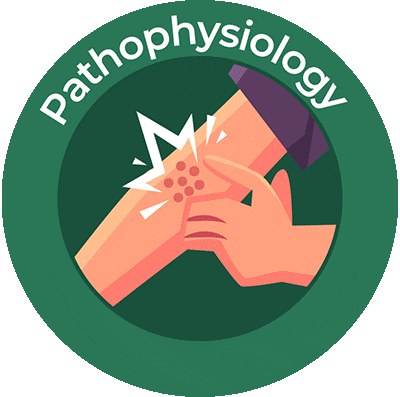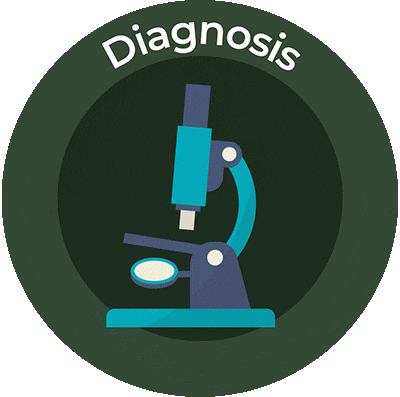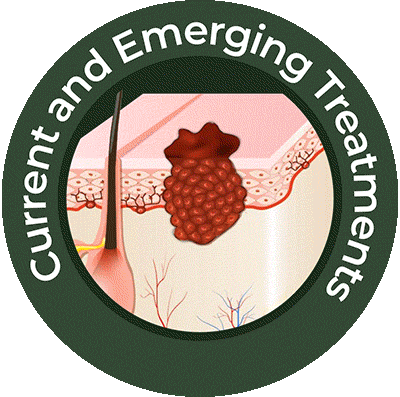Pathophysiology
The cause of chronic itch can be classified as dermatologic (associated with skin conditions such as psoriasis and atopic dermatitis), neuropathic (associated with nerve fibers such as small-fiber polyneuropathy and brachioradial pruritis), psychogenic (associated with psychiatric conditions such as anxiety), and systemic (associated with disease states such as end-stage renal disease).1
The exact sequence of events in the itch-scratch cycle are poorly understood, although development of prurigo nodularis (PN) is a reaction to repeated scratching in patients with other etiologies of prurigo including dermatologic, infectious, systemic, and neuropsychiatric.2 Pathophysiology is driven by neuroimmune dysregulation leading to the itch-scratch cycle causing the characteristic skin nodules.
Figure: Itch pathways3

Crosstalk between keratinocytes, the immune system, and nonhistaminergic sensory nerves underlies the pathophysiology of chronic itch.4 The itch cycle begins with the introduction of pruritogens including cytokines such as IL-4/13, IL-31, TSLP, IL-17, proteases such as kallikreins and triptase, Mas-related G-protein couple receptor agonists (MRGPRs) such as chloroquine, neuropeptides, amines, and lipid mediators. Keratinocytes are a major source of pruritogens. Pruritogens, in turn, activate receptors, a majority of which are G-protein coupled receptors (GPCRs). These receptors promote the opening of ion channels such as transient receptor potential vanilloid 1 (TRPV1) and TRP ankyrin 1 to generate action potentials. Histaminergic and nonhistaminergic neurons send signals separately and distinctly, inducing acute itch and chronic itch, respectively.4
Many immune cells including neutrophils, T cells, mast cells, and macrophages are seen in skin lesions associated with PN. Some of the major players in the cascade of events in this itch cycle identified so far include T helper cell 2 cytokine (Th2), IL-4, IL-5, IL-10, IL-31, IL13, Th17/IL-17, Th22/IL-22, and endothelins (ET-1, ET-2, ET-3). The skin has a dense distribution of peripheral afferent nerve fibers including unmyelinated C fibers, which are responsible for pruriception. The itch signal from the skin is transmitted to the central nervous system (CNS) via receptors in these nerve fibers in the dorsal root ganglia. Reduction of intraepidermal nerve fiber density, in spite of hypertrophy and proliferation of dermal nerves, has been seen in PN. Further, lesional skin nerve fibers are immunoreactive to substance P and calcitonin gene-related peptide (CGRP).5
Figure: Neural sensitization4

While underlying systemic illnesses can induce the itch response, chronic scratching itself leads to increased levels of neuropeptides and neurohyperplasia in the dermis and epidermis.6 Neural sensitization occurs when there are changes in the sensitivity of itch-processing neurons. Many factors act at various skin, spinal cord, and brain targets to induce neural sensitization.4
References
- Leis M, et al. Prurigo nodularis: review and emerging treatments. Skin Therapy Lett. 2021;26:5-8.
- Mullins TB, et al. Prurigo nodularis. StatPearls. National Library of Medicine. Updated 9/12/2022. https://www.ncbi.nlm.nih.gov/books/NBK459204/. Accessed 6/13/2023.
- Wong L-S, Yu Y-T. Chronic nodular prurigo: an update on the pathogenesis and treatment. Int J Mol Sci. 2022;23(20):12390.
- Yosipovitch G, et al. Itch: from mechanism to (novel) therapeutic approaches. J Allergy Clin Immunol. 2018;142:1375-1390.
- Qureshi AA, Abate LE, Yosipovitch G, et al. A systematic review of evidence-based treatments for prurigo nodularis. J Am Acad Dermatol. 2019; 80(3):756-764.
- Kowalski EH, et al. Treatment-resistant prurigo nodularis: challenges and solutions. Clin Cosmet Investig Dermatol. 2019;12:163-172.





